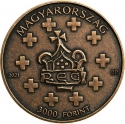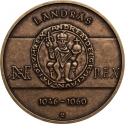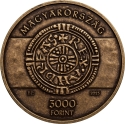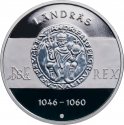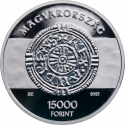You are about to finish your registration. Please check your mailbox (including spam folder). There should be a letter with a confirmation link. Check setting to make sure that your e-mail address is correct.
Send letter againDescription
The Árpád dynasty, also known as the House of Árpád, ruled Hungary from the 9th century through 1301. Named after Grand Prince Árpád, who led the Hungarian tribes into the Carpathian Basin around 895, the dynasty began with the reign of Álmos as the first Grand Prince and continued with Saint Stephen, the first king of Hungary. The Árpáds played a crucial role in establishing Christianity as Hungary's state religion and were known for their extensive dynastic connections across Europe.
The Árpád dynasty produced a significant number of saints and blesseds, earning the title "Kindred of the Holy Kings." The dynasty's influence lasted for 400 years, ending with the death of King Andrew III in 1301. Although the male line ended, subsequent Hungarian kings, except King Matthias Corvinus, were cognatic descendants of the Árpáds. The House of Croÿ and Scotland's Drummond family also claim descent from this royal lineage.
Stephen I (c. 975 – 1038), known as King Saint Stephen, was the last Grand Prince of the Hungarians from 997 to 1000 or 1001, and the first King of Hungary until his death in 1038. Born around 975 in Esztergom, he was baptized with the name Vajk. Stephen married Gisela of Bavaria, and after ascending to the throne, he faced challenges from his relative Koppány, whom he defeated with the help of foreign knights and native lords. Crowned in 1000 or 1001, he expanded his kingdom by unifying the Carpathian Basin and defending against invasions, establishing church institutions and local administration systems. His reign brought peace and prosperity to Hungary, making it a key route for pilgrims and merchants. Stephen died at age 62 or 63, buried in Székesfehérvár. Canonized by Pope Gregory VII in 1083, he is celebrated as a national saint in Hungary, with his feast day observed on 20 August, also known as State Foundation Day.
Engraver: Zoltán Tóth
Obverse

|
Depicts King Saint Stephen from the coronation mantle made in 1031. Adjacent to the depiction, on the left side, in two horizontal lines, the inscriptions "1000" and "1038" (referring to the reign of Saint Stephen) are visible. Around the edge, in a semicircular inscription at the bottom, reads "KING SAINT STEPHEN," while on the right side, the engraver's privy mark is placed. 1000 |
|---|---|
Reverse

|
Depicts a detail of the reverse side of the denar minted with the inscription "Lancea Regis" by King Saint Stephen I surrounded by ten cross motifs. Around the edge, in a semicircular inscription, "HUNGARY" is at the top, the denomination and the inscription "FORINT" are at the bottom, the issuance year "2021" is on the left, and the mint mark "BP." is on the right. Under at least tenfold magnification, the mint mark features micro-inscriptions displaying letters identical to the mint mark's letter. MAGYARORSZÁG |
| Edge |
Stephen, by the grace of divine providence, King of the Hungarians STEFANUS SUPERNA PROVIDENTE CLEMENTIA UNGRORUM REX · |
15 000 Forint
Nation-Building Sovereigns of the Árpád Dynasty
King Stephen I
Subscribe series
Adamo# EM415
Nation-Building Sovereigns of the Árpád Dynasty
King Stephen I



